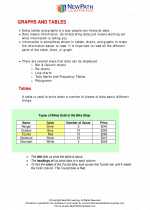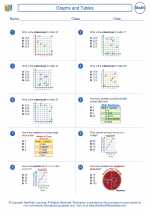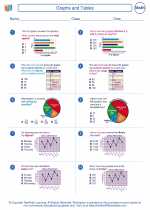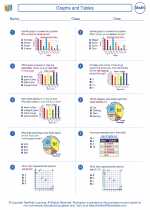Comparing Numbers
Comparing numbers is an important skill in mathematics. It helps us understand the relationship between different quantities and values. When comparing numbers, we use symbols like greater than (>), less than (<), or equal to (=) to show how the numbers relate to each other.
Comparing Whole Numbers
When comparing whole numbers, we look at the value of each digit in the numbers to determine which is greater or less than the other.
Example 1:
Compare the numbers 345 and 278.
First, compare the hundreds place. 3 is greater than 2, so 345 is greater than 278.
Written as an inequality: 345 > 278
Example 2:
Compare the numbers 621 and 621.
Since the numbers are the same, they are equal.
Written as an inequality: 621 = 621
Comparing Decimals
When comparing decimals, we compare the place values of the digits from left to right.
Example 1:
Compare the decimals 3.25 and 3.5.
The whole numbers are the same, so we compare the tenths place. 2 is less than 5, so 3.25 is less than 3.5.
Written as an inequality: 3.25 < 3.5
Example 2:
Compare the decimals 7.89 and 7.89.
Since the decimals are the same, they are equal.
Written as an inequality: 7.89 = 7.89
Comparing Fractions
When comparing fractions, we can use a common denominator to make comparisons easier.
Example 1:
Compare the fractions 1/3 and 2/5.
Find a common denominator. In this case, the common denominator is 15.
1/3 = 5/15 and 2/5 = 6/15. Now we can compare the fractions more easily.
6/15 is greater than 5/15, so 2/5 is greater than 1/3.
Written as an inequality: 1/3 < 2/5
Example 2:
Compare the fractions 4/7 and 4/7.
Since the fractions are the same, they are equal.
Written as an inequality: 4/7 = 4/7
Study Guide
When comparing numbers, remember these key points:
- Compare the digits from left to right.
- Use the greater than (>), less than (<), or equal to (=) symbols to show the relationship between the numbers.
- When comparing fractions, find a common denominator to make comparisons easier.
Practice comparing whole numbers, decimals, and fractions to strengthen your understanding of this important math skill!
.◂Math Worksheets and Study Guides Fifth Grade. Graphs and Tables

 Worksheet/Answer key
Worksheet/Answer key
 Worksheet/Answer key
Worksheet/Answer key
 Worksheet/Answer key
Worksheet/Answer key
